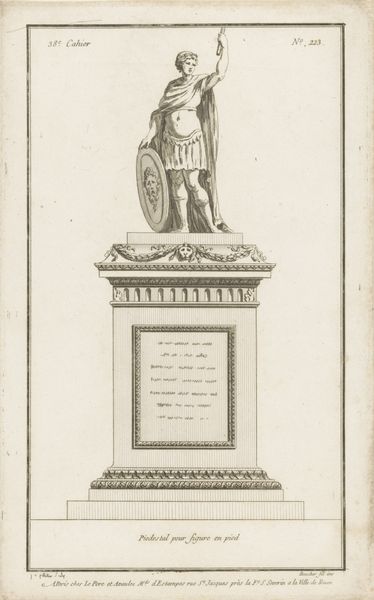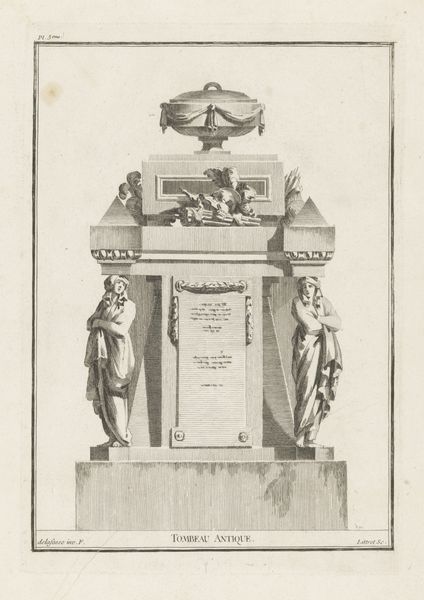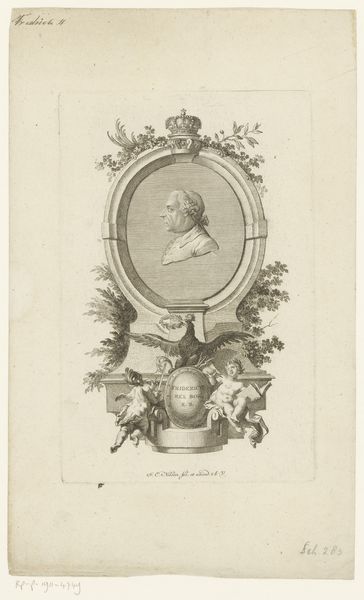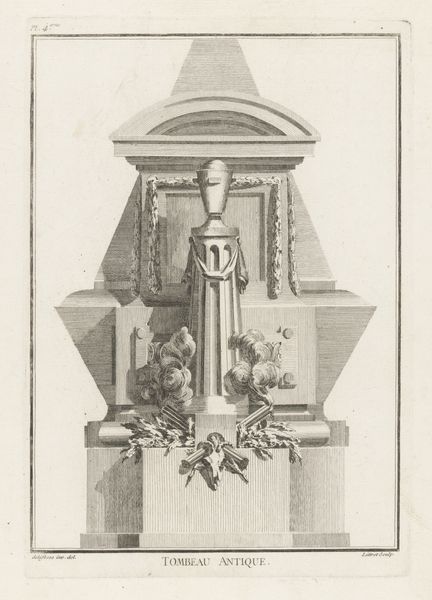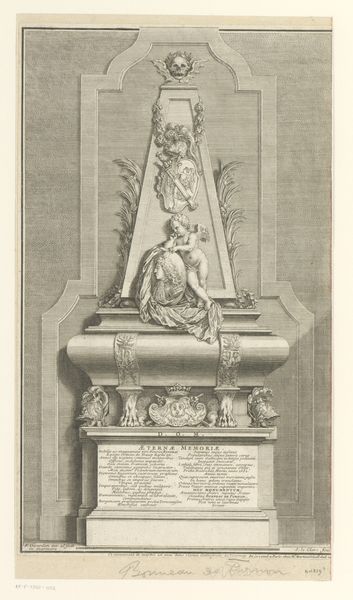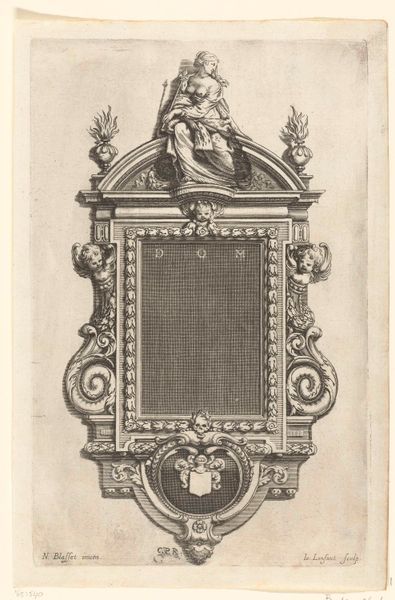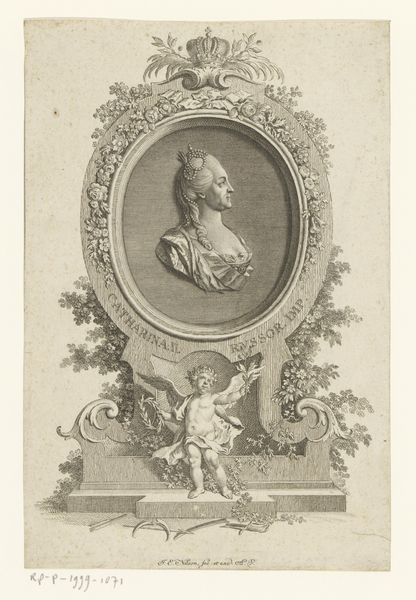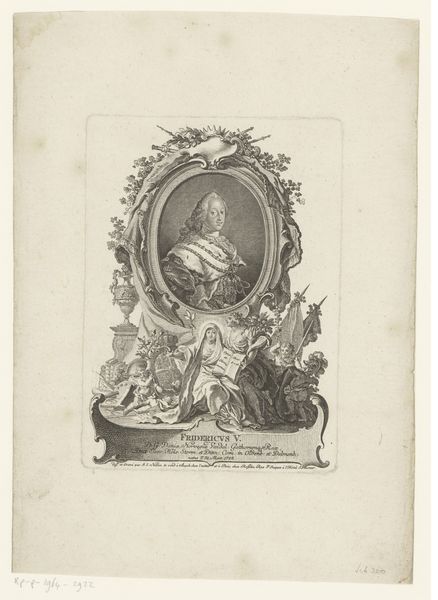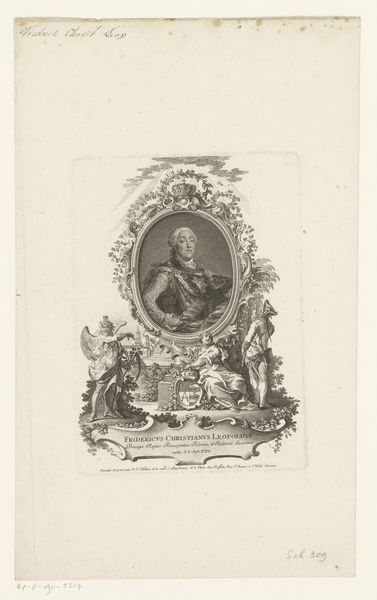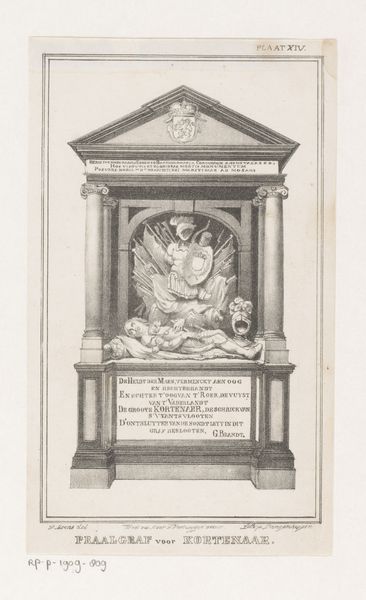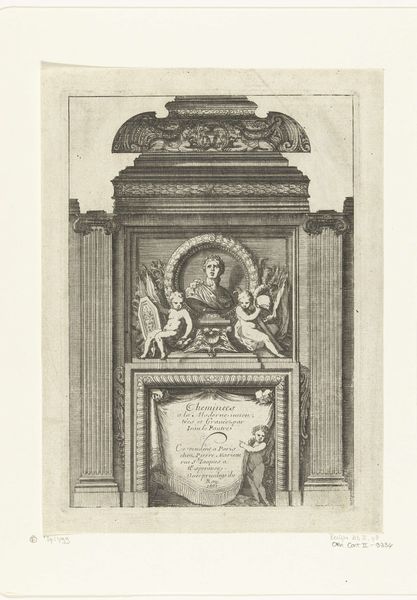
Grafmonument met portret van Georg Jacob Schrazenstaller 1795
0:00
0:00
engraving
#
portrait
#
neoclacissism
#
history-painting
#
engraving
#
miniature
Dimensions: height 215 mm, width 132 mm
Copyright: Rijks Museum: Open Domain
Curator: This engraving, "Grafmonument met portret van Georg Jacob Schrazenstaller," was created in 1795 by Christoph Friedrich Theodosius von Schad. It's a fascinating example of neoclassicism. What strikes you about it? Editor: Immediately, I’m drawn to the layered composition. The starkness of the black and white lines emphasizes the materiality of the engraving process. There's a formality here but something a bit unsettling in the arrangement. Curator: Yes, that unsettling feeling, I believe, stems from the commemorative purpose, typical for its period. It represents Georg Jacob Schrazenstaller’s memorial. We need to unpack who he was and his impact on Viennese society to understand this artwork better. Editor: Absolutely. The image of the engraver within the tomb suggests the literal process of labor, doesn't it? How his image is imprinted as labor within his memorial, thus linking work, commemoration, and production quite explicitly. The choice of engraving for a sculptor's memorial is clever and emphasizes labor as part of one's life and achievements. Curator: And the allegorical figures and architectural framework reinforce that connection to neoclassical ideals. However, it’s also vital to consider how class structures impacted not just who was commemorated, but how the means of his remembrance would have been consumed. Who did Schad intend to view it, and how? Editor: It becomes clear we should consider production for its own sake and the class system it created. I notice also how the engraver utilized dense crosshatching in darker areas while using simple lines elsewhere, really highlighting material effects while demonstrating skills associated with different tiers of artisanal production. Curator: Analyzing it in terms of the artistic skills displayed gives us a broader framework to interpret art's purpose back then. To move towards deeper, more intersectional views about how neoclassicism intersects gendered norms or issues relevant to contemporary art discourses, we should ask those questions. Editor: Seeing the artist’s choice of materials combined with social issues gives the engraving a contemporary edge. In studying these means we bring his art to broader, contemporary debates and relevance. Curator: Precisely. Only then can we really say how far artwork's narrative moves out of mere historical account into enduring themes we deal with today. Editor: I agree completely, it transforms a study of processes into a study of values.
Comments
No comments
Be the first to comment and join the conversation on the ultimate creative platform.
